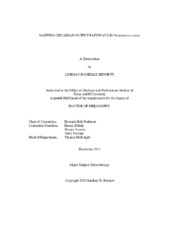Mapping Circadian Output Pathways in Neurospora crassa
Abstract
Circadian clocks are ubiquitous in eukaryotic organisms, providing the ability to anticipate regularly occurring stressful environmental changes. The molecular clock leads to a change in physiology of the organism such that it is prepared for predictable changes. While the external signals detected by the clock, as well as the molecular mechanism of clock components have been extensively characterized, less is known about how the clock manifests time of day information to the organism as a whole. Our lab has focused on identifying output pathways from the clock, using the model organism Neurospora crassa.
We have previously demonstrated the circadian regulation of the conserved Mitogen Activated Protein Kinase (MAPK) OS-2 pathway, a homolog of the mammalian p38 pathway, and necessary for maintaining osmotic homeostasis in Neurospora. I present data indicating the circadian regulation of the 2 other MAPK pathways in Neurospora, the mammalian ERK1 and ERK2 like MAPKs, MAK-1 and MAK-2, and show that they are outputs of the clock. Furthermore, I identified around 500 genes that are mis-regulated when MAK-1 is deleted; greater than 25% of those genes are predicted to be clock-controlled. I demonstrated that the clock is signaling through the MAK-1 pathway to regulate 3 clock-controlled genes (ccgs) that encode proteins involved in several different biological processes including, stress response, cell wall formation, and mitochondrial phosphate transport.
I established the circadian regulation of the transcript levels of 2 of the MAK-1 cascade components, mek-1 and mak-1. Additionally, I found that the accumulation of MEK-1 protein is clock-controlled, suggesting this is one mechanism by which the clock regulates the activity of MAK-1. Additional studies were carried out to elucidate the proteins that directly regulate the expression of mek-1 and mak-1; however, the mechanisms of direct clock control remain unclear and require further investigation.
The finding that the circadian clock regulates all MAPK pathways in Neurospora, combined with the conservation of both the circadian clock and MAPK pathways in mammals provide compelling evidence that mammalian MAPK pathways are also regulated as clock output pathways to control circadian physiology. There is a strong link between aberrations in mammalian clocks, MAPKs, and disease, and therefore, an urgent need to further characterize the circadian regulation of the MAPK families, which will reveal new avenues for therapeutic treatments.
Citation
Bennett, Lindsay Danielle (2013). Mapping Circadian Output Pathways in Neurospora crassa. Doctoral dissertation, Texas A & M University. Available electronically from https : / /hdl .handle .net /1969 .1 /151801.


